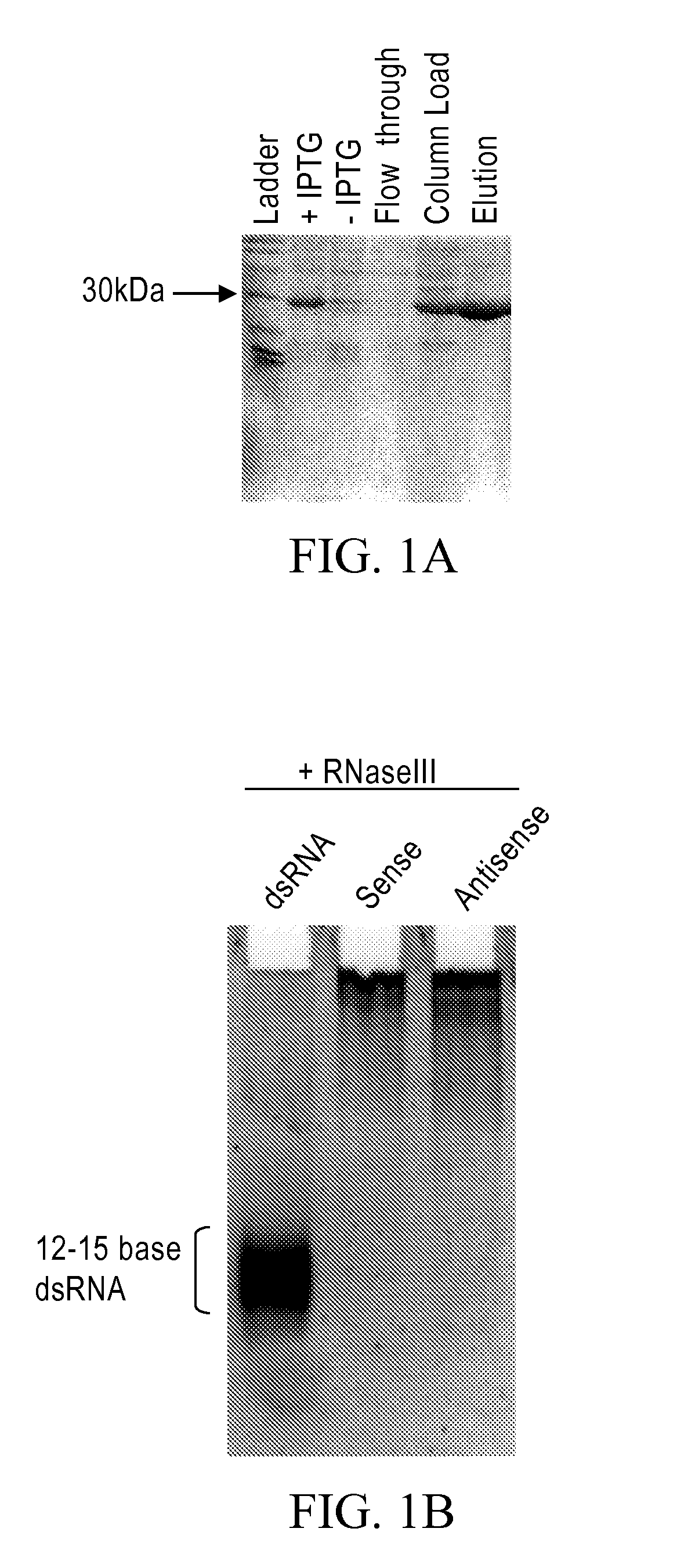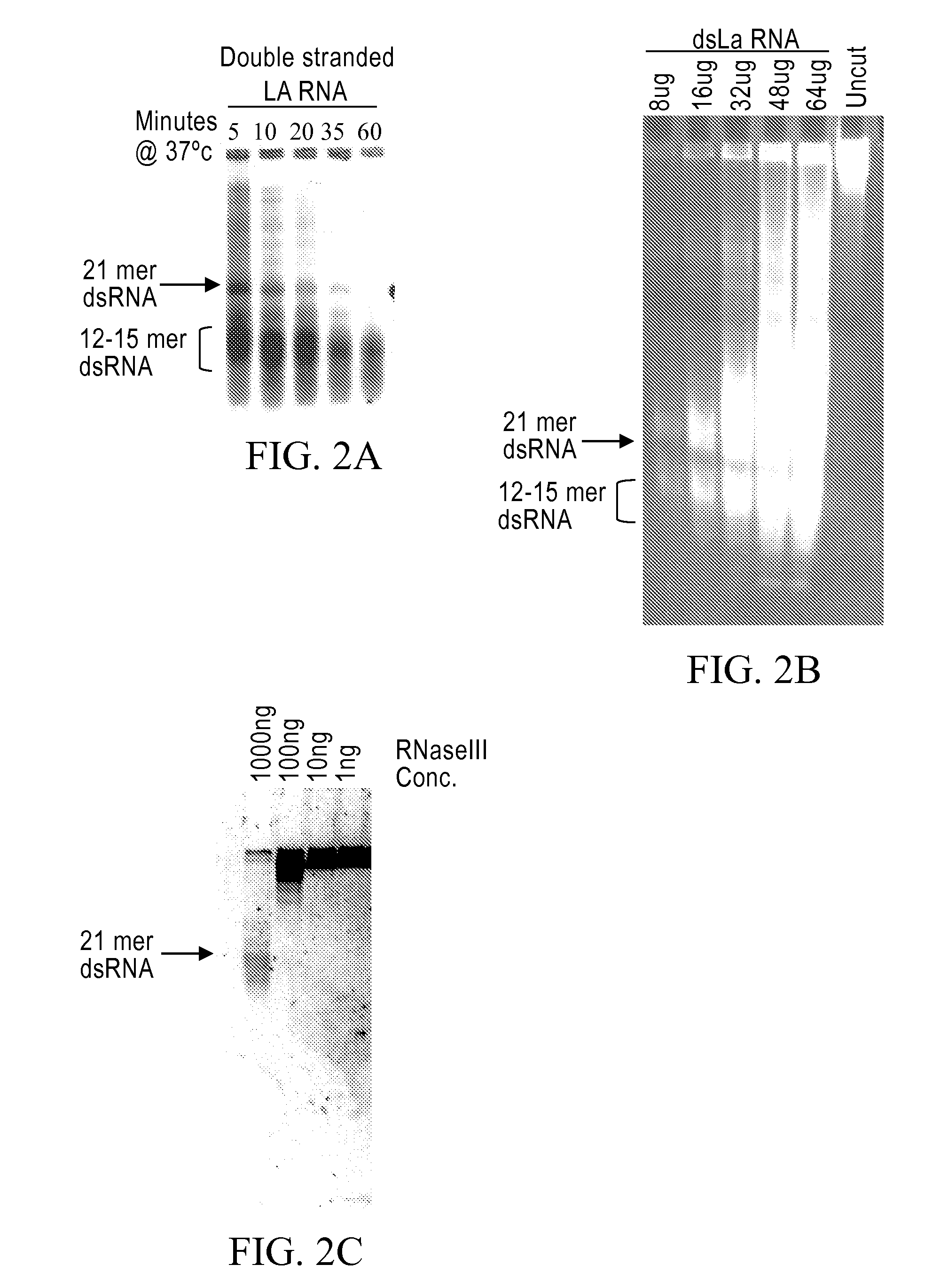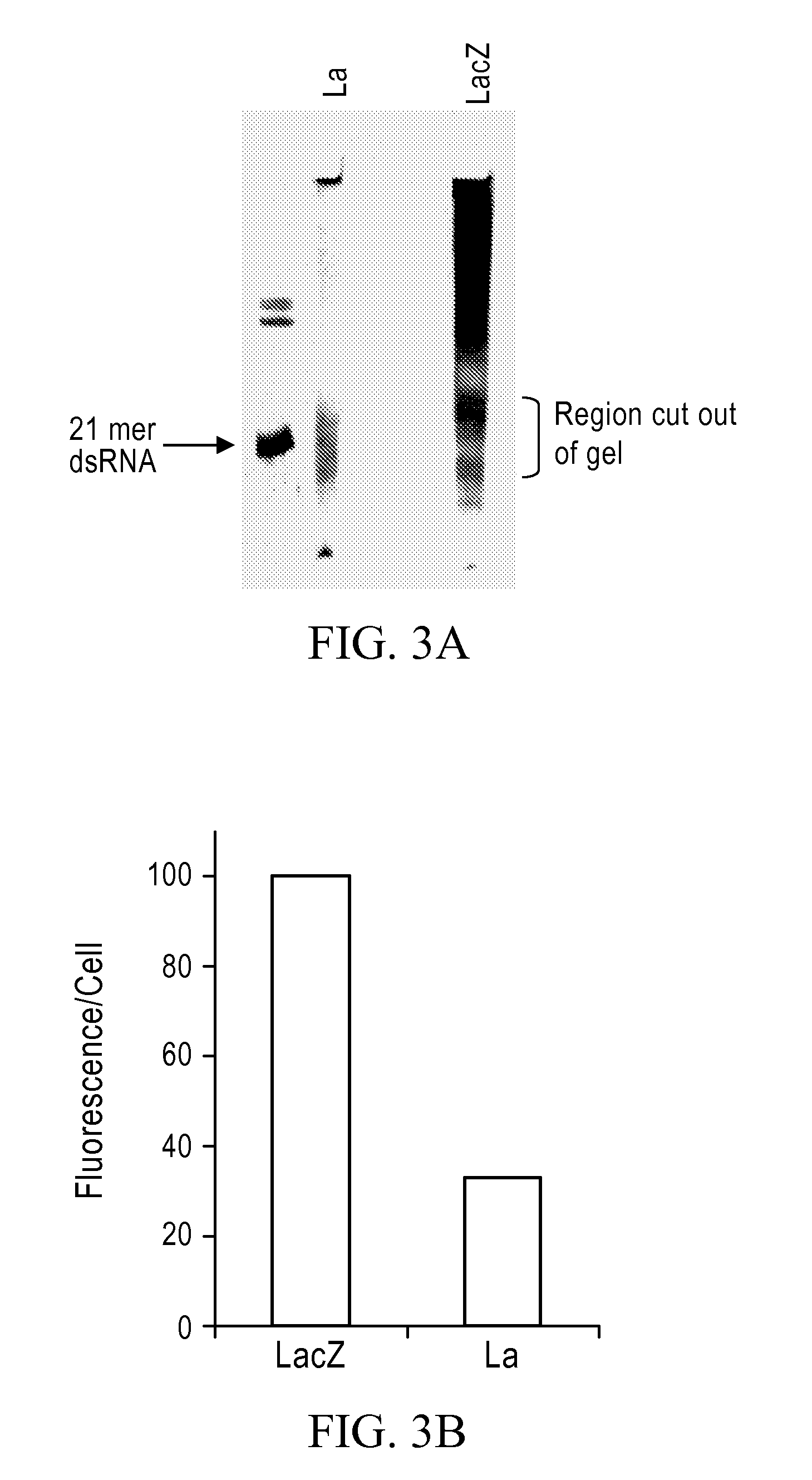Methods and compositions relating to polypeptides with rnase iii domains that mediate RNA interference
- Summary
- Abstract
- Description
- Claims
- Application Information
AI Technical Summary
Benefits of technology
Problems solved by technology
Method used
Image
Examples
example 1
Bacterial RNase III Cleaves Long dsRNA into Small Fragments
[0235]Bacterial RNase III cleaves long dsRNA into RNAs that are 12-15 bp in length. The His-tagged bacterial RNase III was purified as follows: (From a 1-liter culture we made 13 mg of total RNase III protein with 10 mls of a 1.3 mg / ml solution). First, dilution streak the RNase III strain of bacteria BL21 (DE3) E. coli containing the pET-11a with the mc gene cloned into Nde I and Bam HI sites onto an agar plate containing LB-amp (50-100 μg / ml) and grow at 37° C. overnight. This plasmid contains the rnc gene (i.e., RNaseIII gene) under the control of an IPTG inducible T7 promoter and translation initiation signal. From a single colony, inoculate 20 ml of LB and grow at 37° C. overnight with vigorous aeration. Inoculate 1 liter of LB-amp with 20 ml of the overnight culture from step 2. Let this culture grow until it reaches an OD of 0.3-0.4 at OD 600 nm. Induce cells with IPTG (final concentration of 0.5-1 mM) and let grow fo...
example 2
Limited RNase III Digestion Varies Size of Product
[0237]Limited RNase III digestion leads to dsRNA with sizes that range from 12-30 bases in length with a band in the 21 base region. FIG. 2A. A 200-base dsRNA that corresponds to the human La mRNA was produced as follows. PCR from a HeLa cell cDNA was performed using 4 μl dNTP's (2.5 mM dATP, dGTP, dCTP, dTTP), 4 μl, Taq 0.5 μl, 0.5 ml primers 5′-AAT TTA ATA CGA CTC ACT ATA GGA AGC ATT GAG CAA ATC C-3′ (SEQ ID NO:3) and 5′-AAT TTA ATA CGA CTC ACT ATA GGC TTC TGG CCA GGG GTC TC (SEQ ID NO:4) (both primers at 100 pmole / μl), 38.5 μl water, 10×PCR buffer (100 mM Tris pH 8.3, 500 mM KCl, and 15 mM MgCl2). The PRC reaction was cycled 35 times at 95° C. for 30 seconds, 48° C. for 30 seconds and at 72° C. for 30 seconds. Then one cycle for 10 minutes at 72° C. all in a MJ Research minicycler. The 200 base PCR product was gel purified using Qiagen minielute gel elution kit (cat #28604). The gel purified PCR products were then phenol chlorofor...
example 3
RNase III Products can Induce Gene Silencing in Mammalian Cells
[0238]PCR of LA and Lac Z was performed according to the procedure described in Example 2. Following transcription, the Lac Z and La RNA was cleaved with RNAse III as follows: 6.5 μg of double stranded RNA, 1 μl of RNase III, 10 μl of 5× RNase III buffer (150 mM Tris, pH 8.0, 800 mM NaCl, 0.5 mM EDTA, 0.5 mM DTT, and 50 mM MgCl2), and 34 μl Nuclease free water were mixed and incubated at 37° C. for 4 hours. Following the reaction the RNA was phenol-chloroform extracted, ethanol precipitated and run on a 15% acrylamide gel. The gel slice containing the RNase III cleavage products ranging in size between 15-21 bases was cut out of the gel and incubated overnight with rotation at 37° C. in 50 mM Tris, pH 7.6, 0.1% SDS and 400 mM NaCl. Following overnight incubation, the RNA was precipitated with ethanol, dried and suspended in nuclease free water.
[0239]Gel purified siRNA was then used for transfection into HeLa cells. Trans...
PUM
| Property | Measurement | Unit |
|---|---|---|
| Fraction | aaaaa | aaaaa |
| Dilution enthalpy | aaaaa | aaaaa |
Abstract
Description
Claims
Application Information
 Login to View More
Login to View More - R&D
- Intellectual Property
- Life Sciences
- Materials
- Tech Scout
- Unparalleled Data Quality
- Higher Quality Content
- 60% Fewer Hallucinations
Browse by: Latest US Patents, China's latest patents, Technical Efficacy Thesaurus, Application Domain, Technology Topic, Popular Technical Reports.
© 2025 PatSnap. All rights reserved.Legal|Privacy policy|Modern Slavery Act Transparency Statement|Sitemap|About US| Contact US: help@patsnap.com



